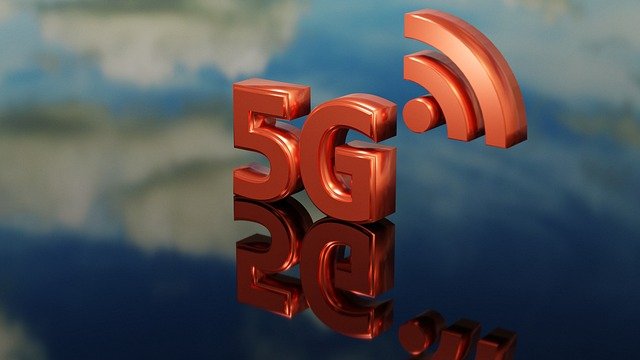Have you ever wondered how you can get better internet anywhere in the world? Imagine having super-fast internet, even in places far from cities. That’s what 5G from space promises. It’s a new technology that could change how we connect to the internet. Let’s explore what 5G from space is and why it’s so exciting.
What is 5G?
First, let’s understand what 5G is. 5G stands for the fifth generation of wireless technology. It’s the next step up from 4G, which you might be using on your phone right now. 5G is much faster and can handle a lot more devices at the same time. This means quicker downloads, better video calls, and smoother online gaming.
How Does 5G Work from Space?
Usually, 5G works through cell towers on the ground. These towers send signals to your phone or computer. But sometimes, it’s hard to build these towers in remote areas, like mountains or deserts. This is where space comes in.
5G from space uses satellites orbiting the Earth to send internet signals. These satellites act like giant cell towers in the sky. They can cover large areas, including places where it’s tough to set up regular towers. This means people in remote areas can get high-speed internet just like people in big cities.
Benefits of 5G from Space
1. Better Coverage
With satellites, 5G can reach places that regular cell towers can’t. This means better internet for people in rural areas or on the move, like on a plane or a ship.
2. Faster Speeds
5G from space promises super-fast internet speeds. This is great for streaming videos, online gaming, and video calls without any lag or buffering.
3. More Reliable
Satellites can provide a more stable connection. Even if the ground towers fail due to bad weather or other issues, the satellites will keep the internet running.
Challenges of 5G from Space
While 5G from space sounds amazing, it’s not without challenges. Here are a few:
1. Cost
Sending satellites into space is expensive. Building and maintaining them costs a lot of money. This might make the service more expensive at first.
2. Technology
The technology to make 5G from space work perfectly is still being developed. Scientists and engineers are working hard to solve any problems.
3. Latency
Latency is the delay before data starts moving. Even though satellites can provide fast internet, there might be a tiny delay compared to ground-based towers. This could affect some activities that need real-time responses, like online gaming.
Companies Working on 5G from Space
Several big companies are already working on making 5G from space a reality. For example:
- SpaceX: Elon Musk’s company is launching satellites to provide global internet coverage.
- OneWeb: This company is also sending satellites to bring internet to every corner of the world.
- Amazon: Through Project Kuiper, Amazon plans to create a network of satellites to deliver high-speed internet everywhere.
The Future of Connectivity
5G from space is an exciting development in technology. It promises to bring high-speed internet to places that have never had it before. This can help people stay connected, access information, and improve their lives. While there are challenges to overcome, the future of connectivity looks bright with 5G from space.
Imagine being able to stream your favorite show, play games, or chat with friends, no matter where you are on Earth. That’s the promise of 5G from space – a truly connected world!
The Dawn of 5G Non-Terrestrial Networking (NTN)
Release 17 of the 3GPP standard introduced 5G NTN, supporting satellites in various orbits, high-altitude platforms (HAPS), and unmanned aerial vehicles (UAVs). This standard solved key challenges like long signal delays and high-speed movement of platforms, enabling reliable 5G connections from space.
5G NR-NTN and IoT-NTN Variants
- 5G NR-NTN: Designed to fill coverage gaps, especially in remote areas, 5G NR-NTN supports a range of applications from messaging to mobile broadband. It leverages satellites in bent-pipe mode and the 5G Standalone (SA) architecture to deliver data rates from 1 to 10 Mbps, or higher with more spectrum.
- 5G IoT-NTN: Aimed at expanding IoT market coverage, this variant supports low-bandwidth services like NB-IoT and eMTC devices. It’s ideal for applications such as environmental sensors, utility meters, and tracking logistics, even in areas without terrestrial networks.
Growing Support for 5G NTN
Many leading companies in the satellite industry, like Airbus, ESA, and Thales, are now collaborating with the cellular ecosystem in 3GPP to enhance satellite communications with 5G. Qualcomm, Ericsson, and Thales have demonstrated successful 5G NR-NTN systems, proving the technology’s potential.
Enhancing NTN with 5G Advanced
Starting with the 3GPP Release 18 standard, 5G Advanced will further refine 5G NTN. Improvements include better coverage, support for new frequency bands above 10 GHz, and reduced reliance on GNSS for positioning. These enhancements aim to ensure smooth transitions between terrestrial and non-terrestrial networks.
The Future of Satellite Communication
Previous attempts to popularize satellite communication lacked the unified technology standard that 5G provides. With 5G, mobile operators and satellite service providers can work together to offer ubiquitous connectivity using cost-effective, widely accepted devices. The momentum of the 3GPP ecosystem and the evolving 5G technology promise a bright future for 5G NTN.
Relevant Topics:
Conclusion
5G from space could be the next big thing in global connectivity, providing reliable internet access to everyone, everywhere. Qualcomm’s pioneering efforts and the support of the broader 3GPP ecosystem are paving the way for this exciting technology, ensuring a connected future for all.

1 thought on “5G from Space: The Next Big Thing in Connectivity”